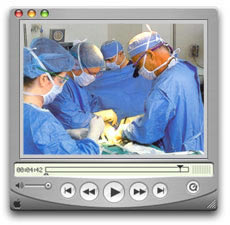Should You Have an HSG after Tubal Ligation Reversal?
The Chapel Hill Tubal Reversal Center gets asked a lot about HSG by women after tubal reversal surgery. They are questioning whether their tubes are really open, regardless of the checking Dr. Berger does during the surgery, and want to do this procedure. However, there are concerns about this being done too quickly.
First off, you may be wondering just what a HSG or hysterosalpingogram is. Maybe your doctor mentioned getting it done or you have heard of it elsewhere. An HSG is essentially a real time x-ray procedure done under a fluoroscope. It is done as an outpatient procedure that doesn't take very long.
You will lie on your back on a table. A speculum is placed into your vagina. If you have had a pap smear done, you are familiar with this type of device. Your cervix is cleaned and then opened slightly. A cannula, or flexible tube, that is inserted through the cervix is used to introduce an iodine based "contrast" material which will show up on the x-ray. As this contrast material shows up as an opaque material, the doctor can watch the flow as it moves through your uterus, up through your fallopian tubes and spills out of them into the abdominal cavity.
Your doctor may have you move from your back to one side and then to the other in order to get the "dye" to flow into your fallopian tubes. Some doctors may even try to force the material past any blockages by adding a lot of the material into your uterus.
Some women experience only very mild cramping during the HSG whereas others say it very painful. Some have also reported feeling as if they were going to pass out. It is highly suggested you take at least 600mg of ibuprofen one hour before the procedure is done. If you do have problems with pain, it is also highly suggested you discuss this with your doctor before the procedure is done.
One suggested reason for the pain by women who have had this done is due to "debris" being within your uterus. This is why you should have this done after menstruation but before ovulation. This allows most of the debris from a cycle to be removed first. You do not want it done after ovulation as it is possible it could interfere with potential pregnancy.
Some possible risks include a risk of infection which might damage your tubes requiring removal, fainting (as mentioned above), iodine allergic reaction or spotting. If the spotting continues past one or two after the procedure or becomes heavy, the patient should notify her doctor. If you have an allergy to iodine or seafood, a non-iodine version of the procedure should be done. Be sure to tell your doctor if you are allergic.
As for minimizing the risk of infection from the procedure, Dr. Berger of Chapel Hill Tubal Reversal Center says you should use a betadine vaginal douche the evening before and the morning of the procedure. You should also get a prophylactic antibiotic prescription from your doctor.
If you want to do this procedure after tubal reversal, Dr. Berger recommends waiting at least six to 12 months. Using his own tubal reversal statistics, he has found that 70% of women will conceive within 12 months of having the surgery. The mean time to conception is 10 months.
Too often, however, even given all the above, he finds the procedure does not give conclusive results. The dye may not make it into the fallopian tubes because of a spasm or mucus or calcium deposits. Or not enough dye is used meaning it will not spill into the abdominal cavity even if it makes it past the tubal anastomosis site. The radiologist, however, may mistakenly interpret this as meaning there is a blockage.
So if you are considering doing a HSG after tubal reversal, it is much better to wait till at least a year past your tubal reversal surgery. Most of Dr. Berger's patients will conceive in less than a year proving that the tubes are open. That means you don't have to go through a potentially risky, expensive, and painful procedure that may be inconclusive.


No comments:
Post a Comment